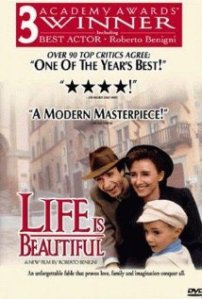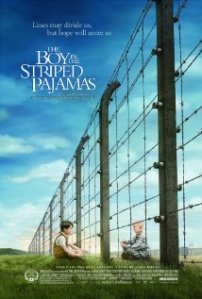The Holocaust, as a matter of history, cannot be denied, and similar atrocities that have followed it cannot be excused or accepted.
My thoughts, feelings and strategies on writing about films in which the Holocaust is portrayed remains a work in progress.
The current project, sub-titled, War and Literature, is drawing to a close. So, too, Film and Literature and Cultural Diversity. In all three projects I will be discussing and writing on Bernhard Schlink’s The Reader, William Styron’s Sophie’s Choice and Thomas Keneally’s Schindler’s Ark. All three novels were adapted to the screen, directed by Stephen Daldry, Alan J Pakula and Stephen Spielberg, and went on to win many awards, mostly due to the artistic and fictive interpretations of The Holocaust in which no less than six million European Jews were clinically and brutally murdered. Countless many millions of others lost their lives too.
Amongst the many millions that died at the hands of Adolf Hitler and Josef Stalin were innocent children who were never taught to hate. In all three of the above stories, children are featured. Long after the above projects are completed and its writings published, I will still be reading, watching and writing.
I will continue until men and women have learned to embrace history, even if not their own, learned not to shun those who think, feel and live differently from them. If the lessons of the past are never mastered then, I am afraid, history repeats itself.
In the meantime, let me re-introduce you to two films in which children are foregrounded.
Life is Beautiful is Roberto Begnigni’s beautiful, sad and humorous interpretation of the Nazi invasion of Italy during the second World War showing how a romantic Jewish bookstore owner comes to terms with the separation from his prissy, but beautiful wife, a stereotypical and, at times lonely schoolteacher, and the growing pains of his little son, Joshua.
This is done at the hands of the Nazi’s SS agents on behalf of Benito Mussollini’s Racial Laws in Fascist Italy.
While incarcerated in the concentration camp the ever-present father makes every attempt to soothe his son’s fear of the Nazi’s and indulge him in a delightful boy’s own world which includes the promise of a real tank at the end of an arduous competition to survive in the harsh camp. He also makes every effort to communicate his love for his wife over a gramophone record which wails across the prison yard.
With ironic overtones, there are comic scenes aplenty, with my personal highlight being that of the affable father and lover’s roles as both interpreter for the German soldiers and waiter to the Italian bourgeoisie
There are also sombre and yet artistic presentations of the Nazi’s brutal annihilation of the Italian Jews. For me, it also suggests Giorgio Bassani’s The Garden of the Finzi Contini’s which capture the mood of Italian Jews, already ghettoized by Mussolini, on the eve of Hitler‘s invasion of their territories.
In this interpretation of the Holocaust, Begnigni skillfully adds humour and a touch of Italian charisma to lighten the load on a sombre reflection.
The Boy in the Striped Pyjamas, directed by Mark Herman, is a response to the question whether the Nazi regime’s children may be complicit in the atrocities committed against European Jews. One answer given was, “how could they be?”, after all they were merely children, innocent in their impressions of the world that they have been brought up in.
I asked one of my readers whether he had read Bernhard Schlink‘s The Reader, described as a confessional novel and in which the narrator attempts to account for his own guilt in not helping a Nazi foot soldier as opposed to rescuing her victims, or helping to bring justice to the families of those who had been murdered by the Nazis.
Stephen Daldry‘s film adaptation was equally effective in asking these questions, but the answer as to whether young children are complicit and, therefore, guilty for crimes committed against humanity, lies in The Boy in the Striped Pyjamas.Mark Herman‘s adaptation is of John Boyne‘s novel of the same name.
The story is told from the perspective of an innocent eight-year old boy whose father is commander of a death camp (rather than concentration camp). This boy’s innocence is counterpoised by his father’s meticulous attention to detail and callous sense of duty in exterminating Jews, including innocent Jewish children. The boy’s innocence is also seen against his twelve-year old sister’s new-found belief in the creation of a great Fatherland which must solve the Jewish problem through murder.
The girl’s innocence is lost forever after her pre-adolescent infatuation with a German officer and the belief in the propagandistic historical teachings of the children’s tutor who explains that the social and economic problems which all Germans face are as a result of their nation’s defeat during the Great War (first World War) and the betrayal of the Jews.
Vera Farmiga‘s portrayal as the boy’s mother is plausible in giving an often neglected side of dissent and disapproval of the Nazis’ supremacist ideologies and the cruel methods used to bring it about. David Thewlis’ performance as the boy’s cruel father is also credible, but does not reach the coldness of American actor, Michael Moriarty’s performance in the controversial American TV-series, The Holocaust and Ralph Fienne’s brilliantly cold rendition of the corrupt Nazi camp manager, Amon Goeth in Steven Spielberg’s adaptation, Schindler’s List.
The so-called star of this film is Asa Butterfield as the boy, Bruno. Bruno’s screen presence, while small and innocent, chillingly resembles that of Adolf Hitler with his dark hair and side path. Every screen shot of this innocent, little boy leads the viewer to reminders of Hitler and his evil deeds.
To divulge the entire mis-en-scene and story plot would spoil it for you, but perhaps it is essential to mention Bruno’s innocent friendship with his equally innocent young, Jewish friend, Shmuel. Their friendship is foregrounded, showing how as German Christian and German Jewish boys they interact with one another, ignorant to what is truly happening around them.
The opening scenes of The Boy in the Striped Pyjamas are also critical in explaining the innocence of children. In the event, young boys are seen running through the streets of Berlin, playing war games. Any male viewer who grew up before the advent of television and TV games will relate to such scenes.
An effective cinematic effect in depicting bipolar opposites between the Nazis and the Jews, and the two boys, is their place of meeting, far beyond Bruno’s post-modern and highly secluded and secured residence and Schmuel’s camp.
Mirroring the boy’s games, Bruno’s sister, Gretel, discards her dolls as playthings as she is awakened to her misguided sense of duty in acting for the Fatherland of Adolf Hitler and the Nazis, and the pursuit of a master race. The depiction of the residence is effectively done as it ironically refers to Hitler’s distaste for post-modern architectural structures.
Having not yet read the novel, I stumbled upon a scathing objection to John Boyne’s text which objectifies the use of the Holocaust as a fictional theme. I argue that at this critical point in our history, much has yet to be learned about the persecution of “the other”, a phrase coined by post-colonial literary critics. The Darwinian survival of one race, or cultural group, is excused by mass killings of other, mostly innocent, opposing or dissenting groups.
In order to understand the world that we live in presently, it is important for us to engage critically and objectively. An acknowledgement of the truth about our past goes hand in hand, shoulder to shoulder, towards creating a world that is at peace and in harmony with its surroundings.
The Holocaust, as a matter of history, cannot be denied, and similar atrocities that have followed it cannot be excused or accepted.
Returning to the theme of innocence, I argue that it can be lost. It is possible for a child to recognise the difference between good and evil, but the nurturing of its parents is crucial to guiding the child in the direction of good. In The Boy in the Striped Pyjamas the consequences of propagating ideologies which are inherently evil, whether out of ignorance or wilful knowledge, are not only seen, but felt.

